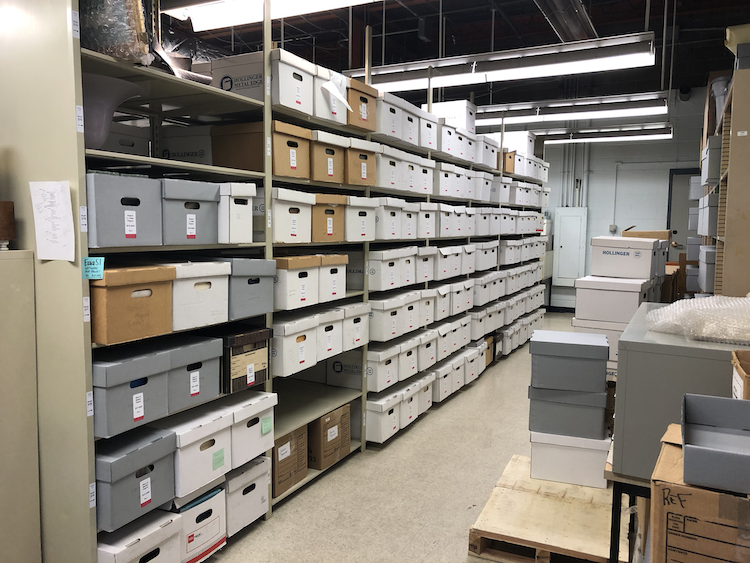
Every October, archives around the country celebrate American Archives Month and Ask an Archivist Day to raise the public's awareness of our profession and the collections we care for. This October we are excited to share a new exhibit with you, What We Don't Have: Confronting the Absences of Diversity in the University Archives. Our hope is that this exhibit will not only shed a light on what we don't have, but that it will expose our work as archivists which largely takes place behind-the-scenes.
At the University Archives, it is our job to collect and preserve the history of Carnegie Mellon University. While all archives have different collecting scopes, we almost exclusively collect records created by the university administration, faculty, staff, students and community members. This can range from memoranda, correspondence, department newsletters, event fliers, photographs, special reports, yearbooks, emails, financial reports, research materials, t-shirts, speeches, websites, event programs, meeting minutes, promotional materials, audio and video recordings, oral histories, and SO much more.
In the exhibit we unpack many terms from our profession – acquiring, processing, accessible, historical value, archival power – that largely explain what we do as archivists and the consequences our actions have. To compliment the exhibit and to celebrate Ask An Archivist Day, here is a behind-the-scenes look at some of the activities that regularly take place in the University Archives.
Acquisition: Thank you for your donation!
Materials come to us in a variety of different ways. Some donors ship their materials in the mail, while others have them transported to the University Archives on pallets with help from the CMU Facilities Department.
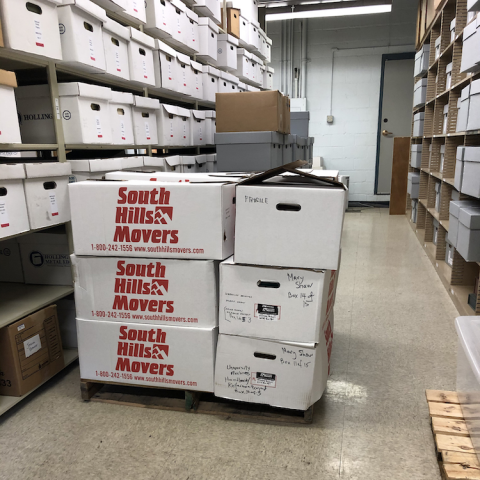
A recent donation we received in the summer of 2020.
We have also picked up materials from the donor directly. Sometimes the materials are boxed up when we arrive and other times we work with the donor to box up the materials, paying special attention not to disrupt the order, if possible. Some collections are small and we can load them on a cart and wheel them across campus, while others are so large that we have to rent a 12ft box truck to pick them up.
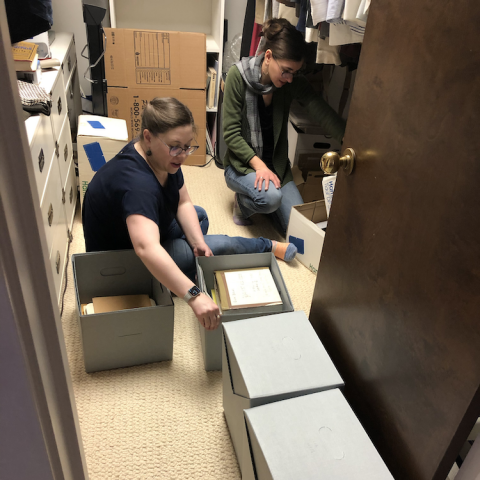
Archivists Julia Corrin and Kate Barbera pack up a donor's records, January 2020.
Once the materials are in our care, we label all the boxes, and we create a box inventory and a record in our collections management system. The record is published on the University Archives website and will surface when researchers (you) are searching our collections for specific information. Then we put the boxes away in one of our two storage locations. Currently a quarter of our collections are stored on the second floor of Hunt Library and the rest are stored at two off-site locations, one of which is in the East Liberty neighborhood (pictured in the first image).
Processing: What are you going to do with that stuff?
We take a series of steps to get a donation in shape so that researchers (you) can find the information you are looking for. We call this, processing, and it can take anywhere from a day to several years depending on the size, organization, and contents of the collection. Sometimes collections come to us in really good shape and it looks like materials went directly from the filing cabinet to the box. Other times, items look as if they were dumped haphazardly into the box. Obviously, the former is the archivist's dream!
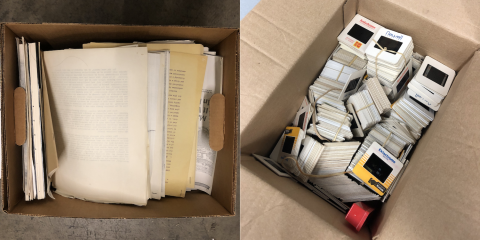
Some collections come to us somewhat unorganized.

Some collections come to us well labeled and well organized.
To process a collection we organize materials in a way that we think will be most helpful for the researcher. Often this is chronological order or by document type, like correspondence or photographs. Other times we keep the records in the order we've found them, which might be how the record creator kept them. We also re-house the collection archival acid-free folders and address any preservation concerns to mitigate damage and preserve the materials for long-term use. This can vary from putting negatives or photographs in an acid-free enclosures, to relaxing papers that have curled due to being stored incorrectly.
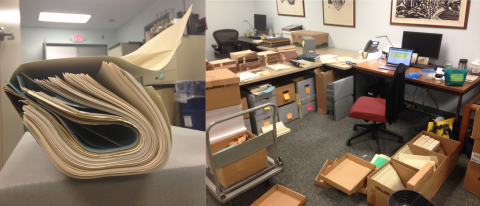
To 'relax' papers like these, we have to store them under weights for weeks or months so that they naturally flatten out and can be stored with the rest of the collection. This is one of the reasons why processing takes up a lot of space!
After we've finished processing, we create a folder inventory, which is one of the key parts of a finding aid. A finding aid is one of the primary tools archivists create to help researchers better understand what's in a collection, who created it, and how did it came to be at the University Archives. Processing is one of the fun parts of our jobs. While it can be tedious at times, processing allows us to explore the collection, get to know the record creator in an oddly intimate way, and we make cool discoveries!
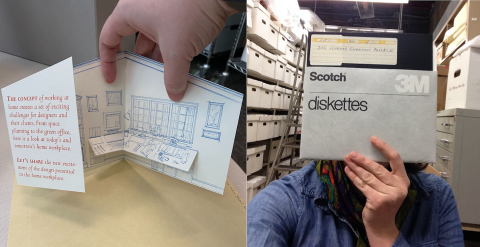
1) A topical find while processing! This advertising piece about working from home was designed by George Corrin, whose papers are in the archives. 2) Floppy disks as big as your head!
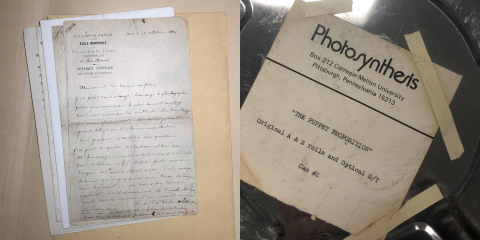
1) A letter from Marie Currie, French chemist, and Nobel Prize winner, addressed to Robert Kennedy Duncan, founder of the Mellon Institute. 2) The original A & B rolls of The Puppet Proposition, a film about the Lovelace Theater, a Pittsburgh-based puppet theater, shot by alum Ralph Guggenheim in 1976.
Once the finding aid is complete we publish it on the University Archives website and we cross list it in the University Libraries catalog and on ArchivesGrid, a national aggregator of archival repositories. While this is a somewhat simplified overview of what we do, we hope that the next time you see a cool image from the University Archives or visit the archives in person to conduct research, that you will have a better idea of all the work that took place behind the scenes.
